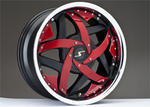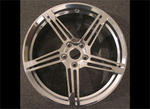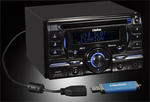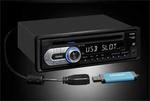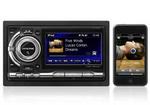
Controlled Power Technologies has announced the launch of their VTES electric supercharger (Variable Torque Enhancement System) which they say it offers a vital boost for low cost, low CO@ emissions level cars. The company says a cost effective way to reduce fuel consumption and CO2 emissions is to fit the VTES electric supercharger on a smaller gasoline or diesel engine together with taller gearing.
The manufacturer has fitted the VTES electric supercharger on a 1.2-litre engine. This resulted in a 50 per cent increase in torque below 3,000 rpm.
Controlled Power Technologies Press Release:
One of the most cost effective steps that can be taken by vehicle manufacturers to reduce fuel consumption and CO2 emissions is to fit an electric supercharger in combination with smaller petrol (gasoline) or diesel engines and taller gearing says Controlled Power Technologies.
Following years of product development and the application of the very latest power electronics,


the company’s innovative electric supercharger known as VTES or Variable Torque Enhancement System has been incorporated in a major project by engine developer AVL and will also feature in the Ricardo-led £3m ‘HyBoost’ programme announced by the Technology Strategy Board on 9 September 2009. Both projects are seeking to maximise powertrain efficiency at the lowest possible cost.
The fully developed and production-ready device could prove timely in helping car makers meet EC directives to cut average CO2 emissions from new cars to 130 grams per kilometre by 2012 and to 95 grams per kilometre by 2020.
There are heavy fines for non-compliance. This means that by 2020 new cars will have to emit on average 40 per cent less CO2 than they do today. An electric supercharger could prove a key component for meeting these requirements. It could also benefit novel internal combustion engine concepts currently in development, which often demand forced air induction.
Unlike a crankshaft driven supercharger or exhaust driven turbocharger, which similarly boost the performance of a downsized engine, an electric supercharger operates independently of engine
speed. This crucial difference means the technology is perfectly suited to maintaining vehicle transient performance and driveability - now widely recognised as a critical marketing issue for any car maker contemplating radical downsizing of an IC engine to maximise fuel efficiency.
“Motorists must feel confident that they can safely keep up with the flow of traffic and will have certain minimum expectations when it comes to vehicle performance,” says CPT engineering director Guy Morris. “This includes the need for an immediate torque response when stepping on the accelerator pedal. As Lord Drayson, Minister for Science and Innovation, put it at the recent Low Carbon Vehicle conference ‘there’s little public
appetite for poorly performing cars, whether they are environmentally friendly or not. People want performance and efficiency’. Electric supercharging also avoids the enormous expense and complexity of integrating an electric motor directly into a powertrain to create a mild or full hybrid electric vehicle.”
Increasing the efficiency of the powertrain through extreme downsizing is fast becoming a widely-recognised near term solution for both petrol and diesel engines. Unfortunately, downsizing the engine and increasing the gearing, while hugely beneficial for fuel economy and carbon emissions, tends to leave a massive torque deficit, particularly at low engine revs. Finding cost-effective technology to overcome this issue is a universal problem facing engine developers.
CPT says electric supercharging offers performance and driveability as yet unmatched by other air charging methods. Tests confirm that when applied to a radically downsized and down-speeded engine, the VTES system dramatically increases transient response, delivering significantly more torque thereby enhancing a car’s driveability at low engine speeds.
For example, when applied to a radically downsized 1.2-litre turbocharged engine, VTES delivers in excess of a 50 per cent increase in torque at engine speeds below 3,000rpm, more than compensating for insufficient power from the exhaust turbine. Significantly, more than 90 per cent of the available torque is delivered in less than a second. Compared with a 1.6-litre naturally aspirated engine, the downsized engine with electric supercharger reduces the 70-100kph (44-63mph) top gear acceleration time from 18 to 11 seconds.
“Even though engines equipped with a conventional mechanical supercharger or exhaust driven turbocharger have seen significant improvements in their dynamic behaviour at low engine speeds, they are fundamentally dependant on engine speed for their operation,” says CPT senior engineering manager Mark Criddle. “Even state-of-the-art systems struggle to satisfy this critical customer requirement for driveability. And while series boosting solutions are gaining popularity because of their extended low speed capability, their dynamic performance is still linked to engine speed and air mass flow rates. The alternative method of boosting performance by integrating an electric motor between the engine and transmission to create a mild hybrid is a costly exercise and difficult to package in front wheel drive vehicles.”
CPT’s electric supercharger provides a viable low cost micro-hybrid solution, significantly increasing an engine’s air charge density over the critical first 10 combustion cycles of a low speed transient. Fitted with a low inertia compressor, the supercharger accelerates from idle to its maximum speed of 70,000rpm in less than a third of a second enabling even a turbocharged engine to achieve full load torque within one second at very low engine speeds. This fast dynamic response and rapid air boosting enables the system to react instantly to high transient load conditions, delivering up to 25kW (33bhp) of additional power at the crankshaft. This is more than enough to compensate for any turbo lag and more cost effective than integrating a 25kW electric motor into the powertrain since only a 12-volt alternator and battery system is required.
“Fast response air-boost systems are essential for delivering radically-downsized engines,” says Morris. “Even the most dynamically optimised turbocharger cannot deliver an air-side response approaching the capability of the latest fuel injection technology. The consequence is ‘air limited’ combustion, which imposes many compromises on the engine developer.”
The combination of a highly dynamic electric supercharger, which CPT recommends in series with a conventional exhaust driven turbocharger makes it relatively easy to optimise the overall response of the system, compared to other air charging methods. The VTES technology can also help reduce soot and particulate emissions from diesel engines, particularly when the driver accelerates at low engine revs, which, in turn, creates an opportunity to reduce the size and cost of the diesel particulate filter (DPF).
“Our electric supercharger is an ideal enabling technology for the extreme engine downsizing being advocated by European carmakers,” adds Criddle. “The system has been designed to be sufficiently flexible to enable use of a common solution across a wide range of gasoline and diesel engine platforms. It delivers the required economies of scale and complements the micro-hybrid strategy of using the existing 12-volt vehicle architecture as an economic alternative to higher voltage ISG based torque assistance.”
CPT’s electric supercharger has received a powerful boost (no pun intended) recently from two major projects, in which the adoption of this innovative technology has been recognised for the development of ultra-efficient low carbon vehicles. It will feature in the Ricardo-led £3m ‘HyBoost’ project backed by the Technology Strategy Board as a part of the UK government’s investment programme to speed up the introduction of low carbon vehicles onto UK roads. The electric supercharger also features in a major project by AVL, another leading independent engine developer, which has produced a demonstrator vehicle with the driveability of a significantly larger capacity gasoline engine, whilst meeting the industry’s holy grail of reducing CO2 levels to that of an equivalent diesel powertrain.
Having demonstrated its electric boosting system at the Cenex Low Carbon Vehicle conference held at Millbrook on 9-10 September 2009, CPT is further showcasing the technology when it makes its annual pilgrimage to the international supercharging conference held in Dresden this week on 24-25 September 2009, where it will again meet with the world’s leading engine developers and industry experts following its technical presentation on VTES in 2008. Meanwhile, CPT says it’s progressing a number of confidential development contracts that will lead to commercial applications, initially for small and medium volume production, and will continue to work with the industry’s powertrain developers to verify and validate the benefits of electric superchargers.
Controlled Power Technologies was set up in 2007 as a management buy-in funded by venture capital initially to acquire advanced powertrain technologies from Visteon Corporation and its technology development partner Emerson Corporation. CPT comes with a highly experienced team of automotive engineers and is backed by a number of prominent investors specialising in the energy and environmental sectors. Further information on Controlled Power Technologies is available at www.cpowert.com



